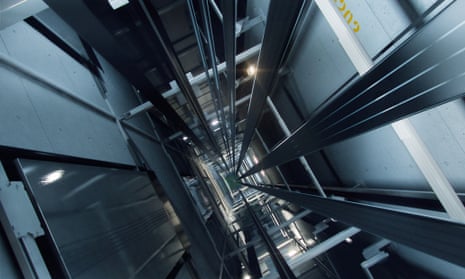We Maintain Lifts to the Highest Standards: Reliable Service for All Lift Types
Diving Into the Globe of Lifts: Usual Concerns Faced by Various Lift Mechanisms
As we browse with the vertical transportation systems of modern-day structures, lifts stand out as a vital element of our daily lives. From hydraulic lifts to traction systems and machine-room-less layouts, each lift type comes with its collection of typical issues.
Hydraulic Lifts
Hydraulic lifts, usually favored for low-rise buildings, make use of fluid pressure to manage the movement of the elevator vehicle (lift repair companies). This device involves a hydraulic pump pushing oil right into a cylinder, triggering the lift to relocate the preferred instructions. While hydraulic elevators are understood for their smooth and silent operation, they do feature their own set of usual issues
One common trouble with hydraulic elevators is oil leakage. The seals in the hydraulic system can wear gradually, leading to oil seepage. This not just produces a mess yet can also impact the lift's efficiency if left unaddressed. Additionally, issues with the control system, such as malfunctioning shutoffs or a malfunctioning pump, can create disruptions in the elevator's movement.
Regular maintenance and prompt repair work are necessary to make certain the smooth performance of hydraulic lifts. By resolving these common issues proactively, structure proprietors can decrease downtime and make certain the safety and security and performance of their upright transport system.
Grip Lifts
When taking into consideration upright transport systems in buildings, one more typical kind other than hydraulic lifts is the traction elevator. Traction elevators operate using a system of ropes and counterweights that relocate the lift vehicle by grasping onto the hoist ropes. This system enables smoother and quicker vertical transport compared to hydraulic systems.
Among the typical problems faced by traction elevators is rope wear. The constant motion of the ropes within the traction system can lead to damage with time, possibly causing the lift to malfunction or become unsafe for usage. Routine inspections and upkeep of the ropes are important to guarantee the lift's appropriate performance and security.
Another problem that traction lifts may encounter is connected to the control system. Problems with the control system can bring about problems such as unpredictable movement, hold-ups in action times, and even full shutdowns. Normal testing and upkeep of the control system are critical to avoid such concerns and guarantee the lift's reliability.
Machine-Room-Less (MRL) Elevators

Among the essential parts of MRL lifts is the compact gearless traction equipment that is installed within the hoistway. This device successfully drives the elevator automobile without the demand for bulky equipment discovered in typical traction elevators. Furthermore, MRL lifts typically use a weight system to stabilize the car, additional boosting their energy effectiveness.
Despite their benefits, MRL lifts lift companies in London may face challenges associated with repair and maintenance due to the constrained area for equipment setup. Access for servicing parts within the shaft can be restricted, requiring specialized training for professionals. Correct upkeep schedules and normal assessments are essential to ensure the ongoing smooth operation of MRL lifts.
Overloading and Weight Limit Issues
Overwhelming and weight restriction issues are important concerns in elevator operations. Lift suppliers design lifts with certain weight abilities to ensure traveler safety and security and tools longevity.
When elevators are overwhelmed, it places excessive strain on the motor, cords, and various other components, potentially causing failures or breakdowns. If they spot excess weight, security systems such as sensing units and overload sensing units are in place to avoid lifts from relocating. Additionally, surpassing weight limitations can cause raised energy consumption and damage on the lift system.
To minimize straining we maintain lifts issues, building managers ought to plainly present weight limits in elevators and inform passengers on the importance of adhering to these limitations - lift repair companies. Routine maintenance checks by qualified specialists can likewise aid make certain that lifts are running within risk-free weight specifications. By resolving overloading and weight restriction concerns proactively, structure proprietors can improve lift safety and security and efficiency
Electric System Failings
Exceeding weight limitations in lifts can not just lead to mechanical concerns but likewise possibly add to electrical system failures within the lift framework. Electrical system failures are a critical worry in lift operation, as they can trigger unforeseen closures, malfunctions, or even safety dangers.
Routine upkeep and examinations are essential to identify and deal with potential electric concerns without delay, making sure the efficient and secure operation of elevator systems. By sticking to weight limitations and conducting regular electric system checks, structure owners can minimize the risk of electric failings in elevators.
Verdict

Hydraulic lifts, typically preferred for low-rise buildings, make use of fluid pressure to manage the activity of the elevator cars and truck.When taking into consideration vertical transport systems in buildings, one more usual type aside from hydraulic lifts is the grip elevator. Grip elevators run using a system of ropes and counterweights that relocate the elevator cars and truck by gripping onto the hoist ropes. Unlike traditional elevators that need a different machine room to house the devices, MRL lifts incorporate most of the elements within the shaft, removing the demand for a dedicated maker area.In conclusion, lifts encounter typical concerns such as hydraulic malfunctions, traction system failures, and electrical system issues.